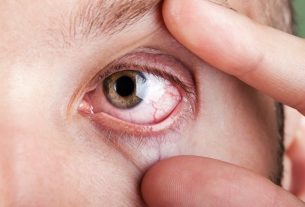Fungal meningitis is an infectious disease caused by fungi, which is characterized by inflammation of the meninges, membranes located around the brain and spinal cord, which can lead to symptoms such as headache, fever, nausea and vomiting.
This type of meningitis is very rare, but can occur in anyone, especially those with a weaker immune system. Fungal meningitis can be caused by different types of fungi, the most common being those of the species Cryptococcus.
Watch the following video and understand more about the causes of meningitis:
Symptoms of fungal meningitis
The main symptoms of fungal meningitis are:
- Fever;
- Intense headache;
- Nausea;
- Vomiting;
- Pain when moving the neck;
- Greater sensitivity to light;
- Hallucinations;
- Changes in consciousness.
In some cases, if meningitis is not adequately treated, complications may arise, such as seizures, brain damage or even death.
Online symptom test
To find out the chances of having meningitis, please select the symptoms you present:
This test is a tool that serves only as a means of guidance and is not intended to provide a diagnosis or replace consultation with an infectious disease specialist, neurologist or general practitioner.
How the diagnosis is made
Diagnosis consists of blood tests, cerebrospinal fluid tests and imaging tests, such as computed tomography and magnetic resonance imaging, which allow visualization of possible inflammation around the brain. See more details on how meningitis is diagnosed.
Make an appointment with your nearest doctor:
Taking care of your health has never been easier!
Main causes
Fungal meningitis is the result of an untreated yeast infection. These fungi spread through the bloodstream, cross the blood-brain barrier, and into the brain and spinal cord.
Although rare, this condition is more likely to occur in people with a weakened immune system, such as people with HIV, people being treated for cancer, or taking other medications such as immunosuppressants or corticosteroids.
Generally, the fungi that cause fungal meningitis belong to the genus Cryptococcus, which can be found in soil, bird droppings and decaying wood. However, other fungi may be at the origin of meningitis, as is the case with Histoplasma spBlastomyces sp.Coccidioides sp. or Candida sp. Find out about other causes of meningitis and how you can protect yourself.
Is fungal meningitis transmissible?
Fungal meningitis is not transmitted from person to person, because contamination occurs through inhalation of fungal spores released into the environment.
Treatment for fungal meningitis
The treatment of fungal meningitis must be guided by an infectious disease specialist and consists of the administration of antifungal medicines into the vein, such as amphotericin B, fluconazole, flucytosine or itraconazole, which must be carried out in the hospital, in addition to medications to improve other symptoms and evaluate signs of improvement in the person’s general condition.
Bibliography
- FERNANDES, BR et. at the.. Differential diagnosis of meningitis. Revista Médica de Minas Gerais 2008. Vol.18. 4.ed; 68-71, 2008
- CHARALAMBOUS, Lefko T. et. al.. Prevalence, healthcare resource utilization and overall burden of fungal meningitis in the United States. Journal of Medical Microbiology. Vol.67. 215-227, 2018
- PASQUIER, Estelle and. al.. Long-term Mortality and Disability in Cryptococcal Meningitis: A Systematic Literature Review. Clinical Infectious Diseases. Vol.66. 1122-1132, 2018

Sign up for our newsletter and stay up to date with exclusive news
that can transform your routine!
Warning: Undefined array key "title" in /home/storelat/public_html/wp-content/plugins/link-whisper-premium/templates/frontend/related-posts.php on line 12
Warning: Undefined array key "title_tag" in /home/storelat/public_html/wp-content/plugins/link-whisper-premium/templates/frontend/related-posts.php on line 13





